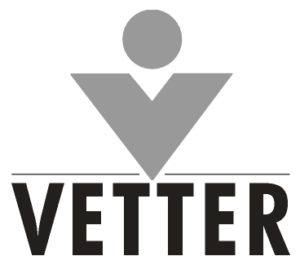Achieving Quality of Filling Operations for Biopharmaceuticals

![]()
 By: Oliver Kurz, Vice President Quality Assurance at Vetter Pharma-Fertigung GmbH & Co. KG
By: Oliver Kurz, Vice President Quality Assurance at Vetter Pharma-Fertigung GmbH & Co. KG
In the process of aseptic manufacturing of prefilled drug delivery systems, the main goal is the prevention of any contamination of the final product. The best course of action is the establishment of a thoroughly designed systematic and process integrated quality approach that results in proper final product quality. Oliver Kurz, Vice President Quality Assurance at Vetter Pharma-Fertigung GmbH & Co. KG, outlines his topic-related insights:
What are the most important steps that must be taken to ensure quality of filling operations for biopharmaceuticals?
Overall, it is critical to ensure that any microbial, particulate or pyrogenic contamination of the final product is prevented. This includes consideration of sensitive product characteristics, as well as control of incoming materials and active supplier quality management, facility design, and technology of compounding and filling operation processes. It is also essential that the management of the ‘human’ factor is incorporated into the steps.
Do the steps vary depending on the type of container that is being filled – vial, syringe, cartridge, ampoule? If so, why and how?
While the general process steps do not vary depending on the type of container processed, the processes and the complexity itself can vary. While vials and cartridges may be processed on the same filling lines, ampoules are processed in a separate way.
What are the key components of properly designed aseptic filling simulations? What are the biggest challenges to effectively conducting them? What key information should be obtained if simulations are performed correctly?
In our experience, all aseptic operations should be assessed within a properly designed media fill. The testing should take into consideration careful inherent and corrective interventions as well as worst case conditions like maximum permitted holding or duration times. A comprehensive understanding of the process and its related aseptic criticalities which takes into consideration the variances during routine operations is essential to effectively conduct successful aseptic process simulations. Key information of a correctly performed aseptic process simulation is to show the process capability for product sterility.
What key analyses should be performed throughout these various tests to ensure quality? What are the biggest challenges to effectively implementing and performing them? What key information should be obtained if these analyses are indeed effective?
An appropriate nutrient promoting the growth of potential microbial contamination is necessary. Further, microbiological tests like a growth promotion test are used to verify the suitability of the nutrient. The contact of the nutrient solution with all interior surfaces in the aseptically filled units must be assured. All filled containers should be incubated at two different temperatures with each followed by a visual inspection. Additionally, training of visual inspection operators including the methodology applied to identify microbiological contamination is important to consider. The resulting microbiological analyses and visual inspection will demonstrate the process capability for product sterility.
Are there any additional requirements for validation of aseptic filling operations that have not been covered in the above questions? If yes, what are they, why are they important, and what are the challenges to implementing them?
In our opinion there are many more detailed aspects that should be considered in order to successfully validate aseptic filling operations. For example, all filled units including discarded integer material must be incubated as part of the aseptic process simulation. The intent is to validate the process from an aseptic perspective and any negative impact on sterility needs to be ruled out.
Is there anything else about ensuring the quality/validation of aseptic filling operations that readers should know?
The establishment of a thoroughly designed systematic approach is key to the successful validation of aseptic processes.
Total Page Views: 2113










